Just a reminder that we are now only two weeks out from this shoot. Shooting has been rained off today, but have consulted the tea leaves, and examined the chicken livers and the omens seem favourable for good weather on the day.
Welcome guest, is this your first visit? Create Account now to join.
Welcome to the NZ Hunting and Shooting Forums.
Search Forums
User Tag List
+ Reply to Thread
Results 46 to 60 of 76
Thread: Te Puke Rifle Club
-
10-02-2018, 02:53 PM #46Banned

- Join Date
- Jan 2017
- Location
- erehwon
- Posts
- 196
-
-
12-02-2018, 09:12 AM #47Banned

- Join Date
- Jan 2017
- Location
- erehwon
- Posts
- 196
Ten members of the club travelled to Trentham for the National championship held on Seddon range from the 26th Jan to the 3rd Feb. There was a field of 208 competitors and 108 of them were overseas visitors.
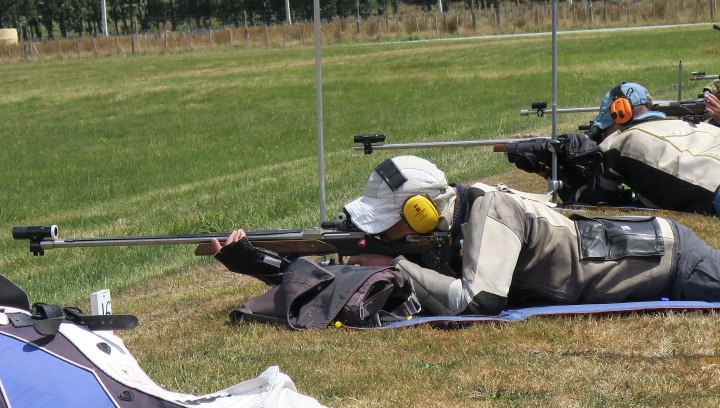 Mike Collings in Final
Mike Collings in Final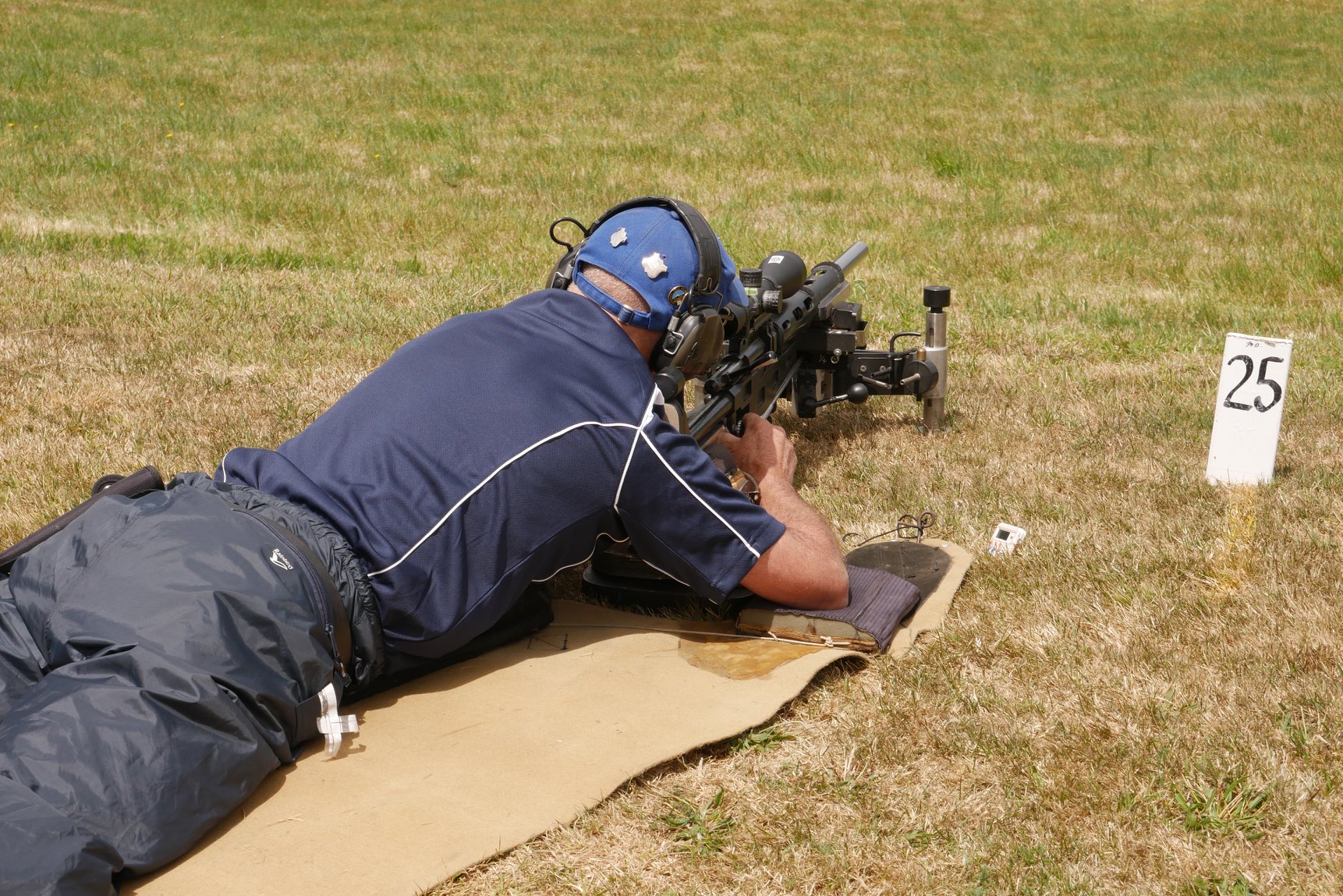 Rob's rig
Rob's rig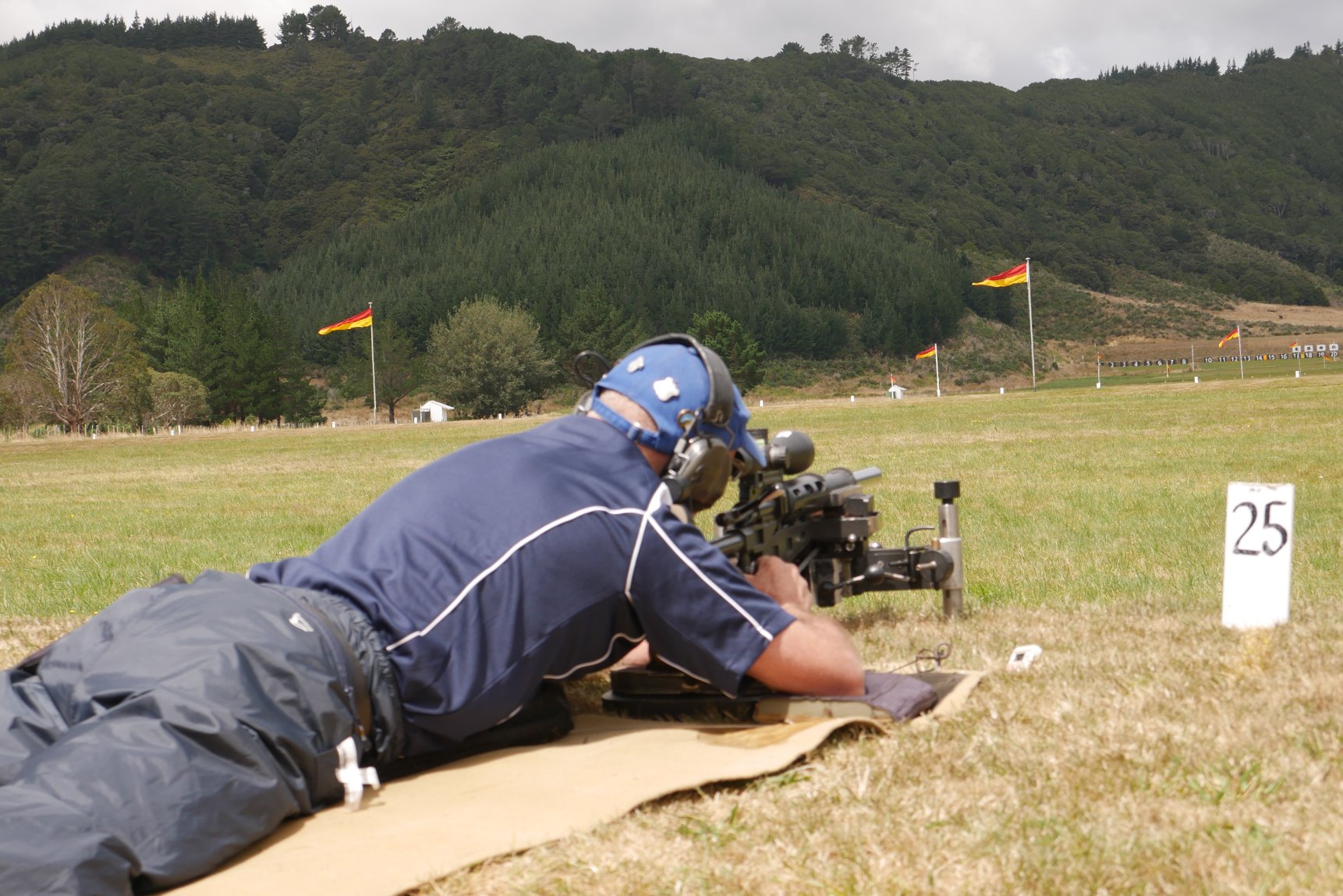 Rob Kerridge winning RO
Rob Kerridge winning RO Under 25 Team, Bridget on left
Under 25 Team, Bridget on left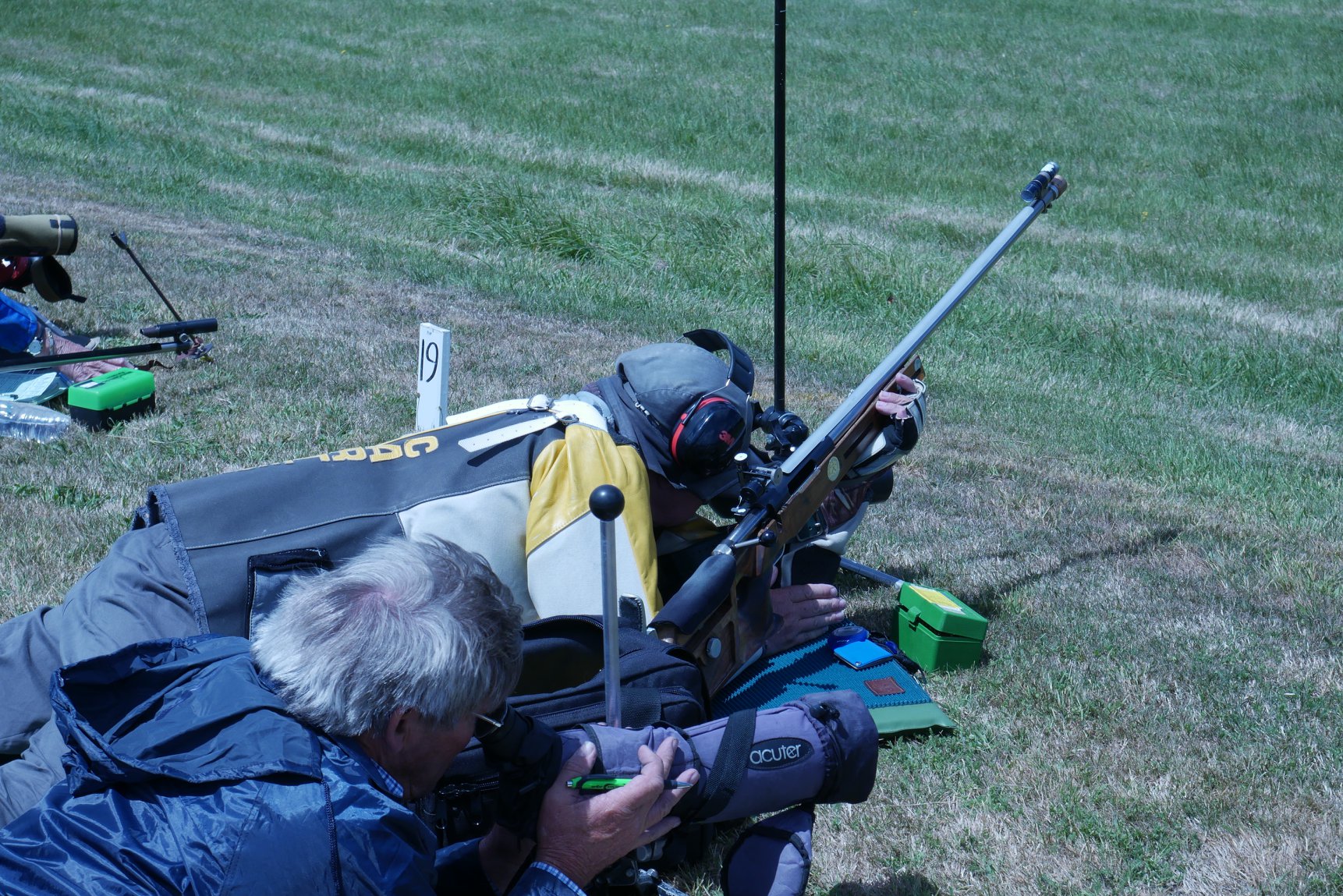 Brian Carter in Final
Brian Carter in Final
-
12-02-2018, 10:12 AM #48
-
14-02-2018, 10:37 PM #49Banned

- Join Date
- Jan 2017
- Location
- erehwon
- Posts
- 196
For sure, for sure! After all it is 900 yards.
Here's a look downrange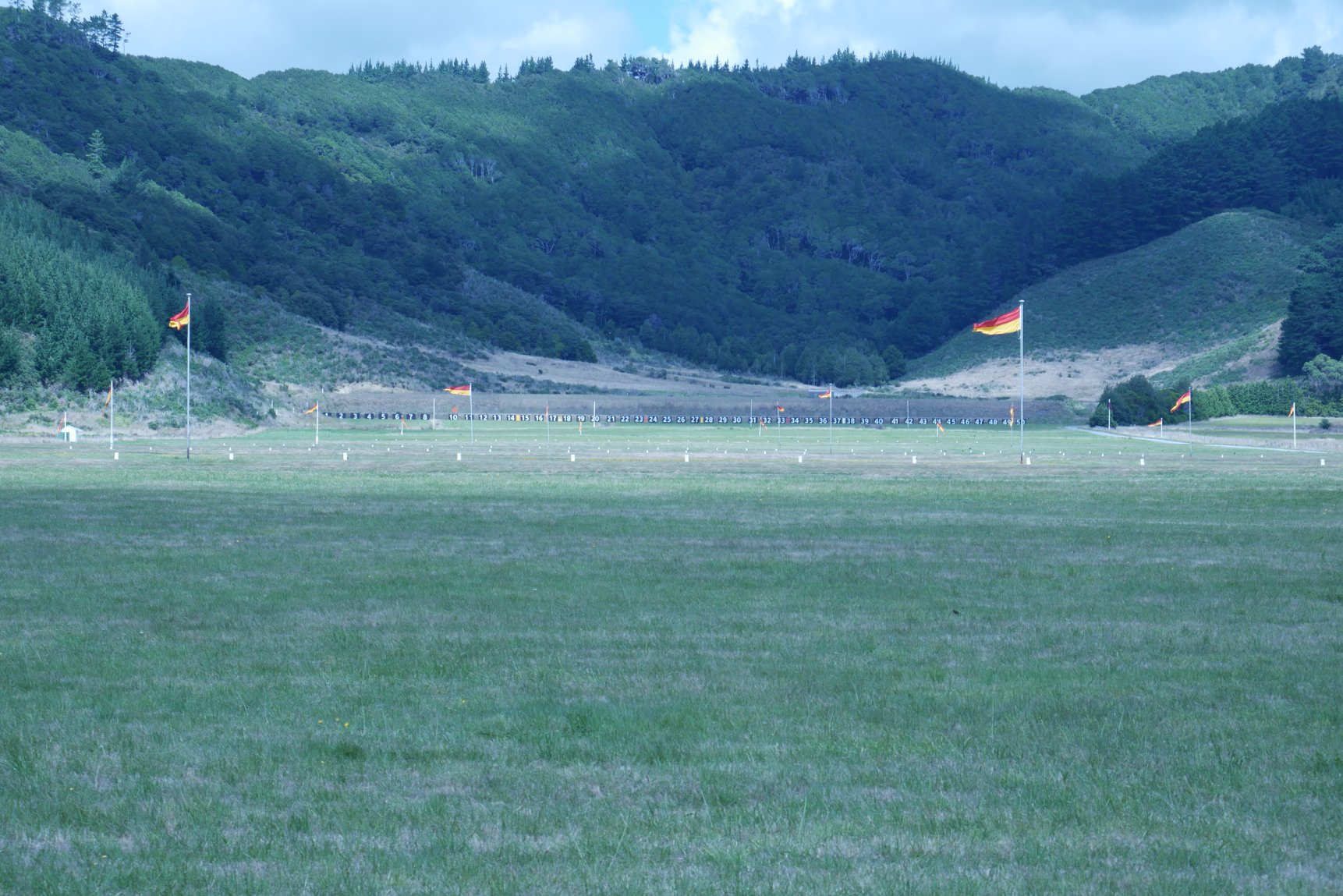
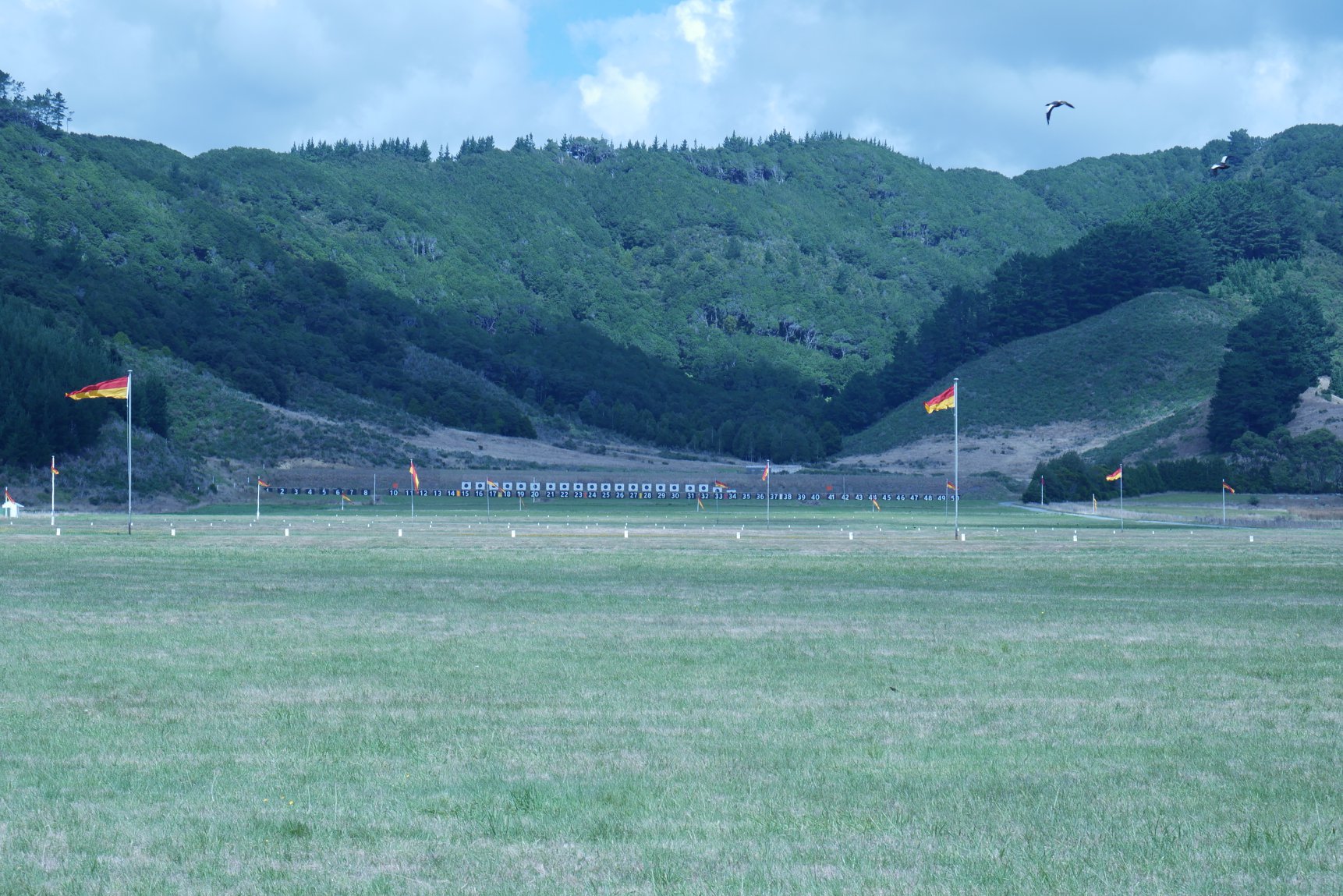 900 view
900 view
Prison to the right, golf-course to the left, and houses on and over the hill. One of the reasons that the RSO require that the action only be closed when the rifle is in the shoulder and pointed at the target.
-
15-02-2018, 02:33 PM #50Banned

- Join Date
- Jan 2017
- Location
- erehwon
- Posts
- 196
I’ve been asked the question by someone offline, who is keen to attend, if his plain rifle with ONLY a 10X scope would be suitable.
This reply is for others out there who’ve never been to a range, and are a bit apprehensive about what to expect.
The NRANZ targets that we use are 1.8 m x 1.8 m and the “Bull”, or 5 ring is approximately 2 MOA in size. The scoring rings move outwards from the “Bull” in about 1 MOA increments. TR competitors shoot at these targets with open(aperture) sights with no magnification, although the rules allow them to use a clearing lens in the front sight of up to .5 dioptre, which gives effectively 1.5 magnification.
Every new hunting rifle sold today, regardless of brand, appears to be capable of shooting 1 MOA with the ammunition it prefers, and the classic 21/2, 3, 4, or 6 power fixed power scopes, or the common 3x9 variable power scopes made by every major manufacturer will give you a clear view of the target, scoring rings, target number and reticle that any TR shooter would envy. Higher magnification is not necessary on this target, indeed it can be a handicap under adverse light and climatic conditions (i.e. when heavy mirage is present). The higher the magnification the more shake for your hold will be seen. It can be scary enough that shooters are reluctant to break the shot when they should.
TR shooters shoot with the rifle held in both hands with only the support of a sling on one arm, and most manage to stay on the target. In contrast, for this hunting rifle shoot competitors may use a bipod or a backpack/daybag to support the rifle. What could be easier?
Provided you come to this open shoot with a hundred yard zero, for most standard calibres, + 4.5 MOA will get you on at 300 yards, +11.5 MOA for 500 yards and +15.5 MOA for 600 yards. This will get you a hit in the black, and knowing that the scoring rings are about 1 MOA apart, you will quickly centre your group.
More problematic is the wind that your bullet will encounter over its journey. There are wind flags distributed downrange so that you may estimate the wind strength and direction, and allow for it before you break the shot. Kestrals or other brand wind meters will not help you here as you will soon realize as you view the differing direction and power downrange from the firing point. In any case, personal wind meters are not allowed on the firing point under NRANZ rules.
A good starting point for judging how much to put on your sight or hold off to compensate for the wind that you can see on the flags, is that if the flag is showing full value(fully extended at right angles to the pole) at 3 or 9 o’clock(square across the line of fire), use the distance that you are at 3 for 300, 5 for 500, 6 for 600, to give a numerical value in MOA that you need to correct for wind. This will get you in the black. Lesser angles and windspeeds you can estimate from this starting point. Make your best estimate and allow for the wind and fire a timely shot. After the shot, immediately look at the flags to see what the wind actually was when you fired the shot, then look at your indicated shot to see how well you judged the conditions. In steady winds you can centre your group and get on with it through knowing that the rings are 1 MOA apart and that it is 6 MOA from the centre to the edge of the target at 600 yards.
You will be squadded on a target with up to 8 shooters per target. The first two shooters will get down on the firing point, side by side. The second shooter must be ready to shoot as soon as the first shooter is finished. Their time will start as soon as the scorer tells them that the target is available. The shooter who has finished must remove their equipment from the mound immediately so as to make it available for no. 3 to get themselves ready. Shooting should continuous on each target so that the day may proceed smoothly. As soon as you have removed your gear from the mound you will come back to relieve the check scorer, and then to score for the following shooter. Times are 14 mins at 300, 14 mins at 500 and 600 yards.
Going back to the question of scope power and the 10x scope I was asked about, at 600 yards that scope will give you an image equivalent to being 60 yards from the target. Stone-throw! Here is a camera view through a 4x Weaver at 600 yards, and as you can see, the scoring rings are visible. This is a poor quality view compared to what the eye actually sees.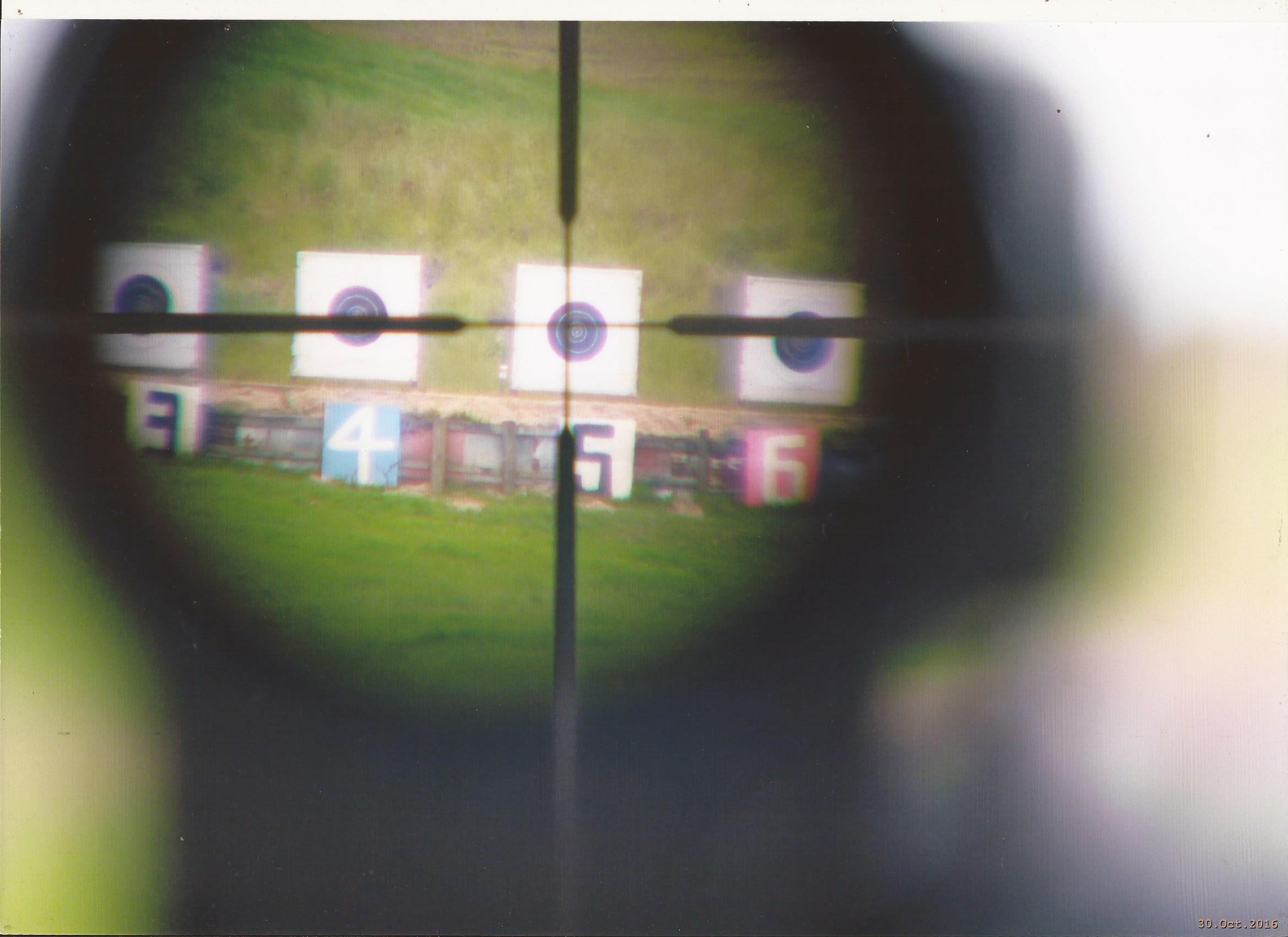
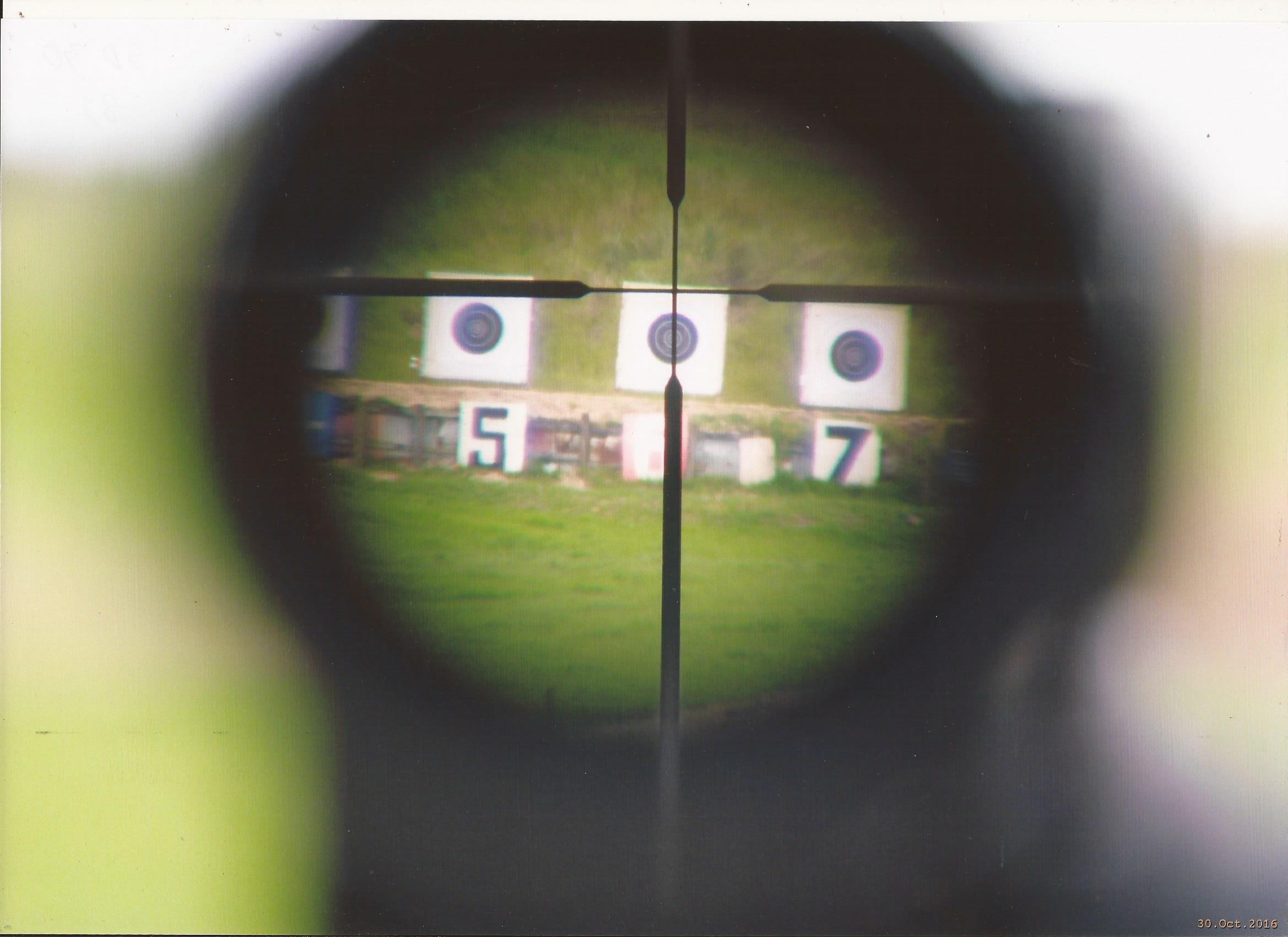
I hope this has allayed some concerns that some may have had, and I hope we have a good turnout on Sunday week
-
15-06-2018, 01:09 AM #51Banned

- Join Date
- Jan 2017
- Location
- erehwon
- Posts
- 196
Our shooting season is over until the 1st of September. Officially that is, but there have been and will be some work to get through for some of our club members.
Brian Carter from this club and John Snowdon from Ashburton club were the NZ fullbore representatives to the Commonwealth games held in April at the Belmont Shooting Complex, Brisbane.
Te Puke rifle club's range at Pongakawa, was again the venue for the NI 300 metre championship, which was held over the weekend of the 26th/27th May in challenging winds.
Three of our members, Brian, Mike and Irene have been selected for the NZ Palma team to compete in the World Long Range Championship that will be held in early February 2019.
Five of our members have nominated for selection in the NZ veterans team, and another member is trialling for selection to the under 19 and under 21 NZ Juniors teams to compete at the same WLRC event.
This event, which will directly follow the National Fullbore Champs is to be hosted by NZ at Trentham between the 3rd and 10th of February 2019. https://www.lrwc2019.nz/ It is 24 years since NZ last hosted the WLRC which was in 1995.
We also have to find a time to shoot a postal match for the NZ Champion Club teams competition for which entries close on the 1st August.
What this means for most club members who shoot in the TR class, is that they will be in training throughout the winter whether it be miniature rifle, 300 metre, electronic trainer, or hours spent in position dry-firing. Some may travel to Australia as their winter is when their major competitions are held.
All in all, a busy and fun season ahead. We look forward to welcoming back those who came for a look this past season, and invite everyone else to come along and have a look and shoot when the new season starts, the first Saturday after the 1st September
-
28-07-2018, 11:51 PM #52Banned

- Join Date
- Jan 2017
- Location
- erehwon
- Posts
- 196
The Te puke RC AGM was held today, with existing club officials returned and subscriptions unchanged. One item that may be of interest to this forums members is that the club has taken on board requests from several bods who have attended our hunter class shoots, to hold two shoots over the season.
Therefore there will be a shoot early in the new season, probably October, as well as February. We will post our 2018/19 calendar as soon as the final dates are confirmed.
A prizegiving for internal club competitions was held after the close of business. Pictured are the A, B, and C grade winners.
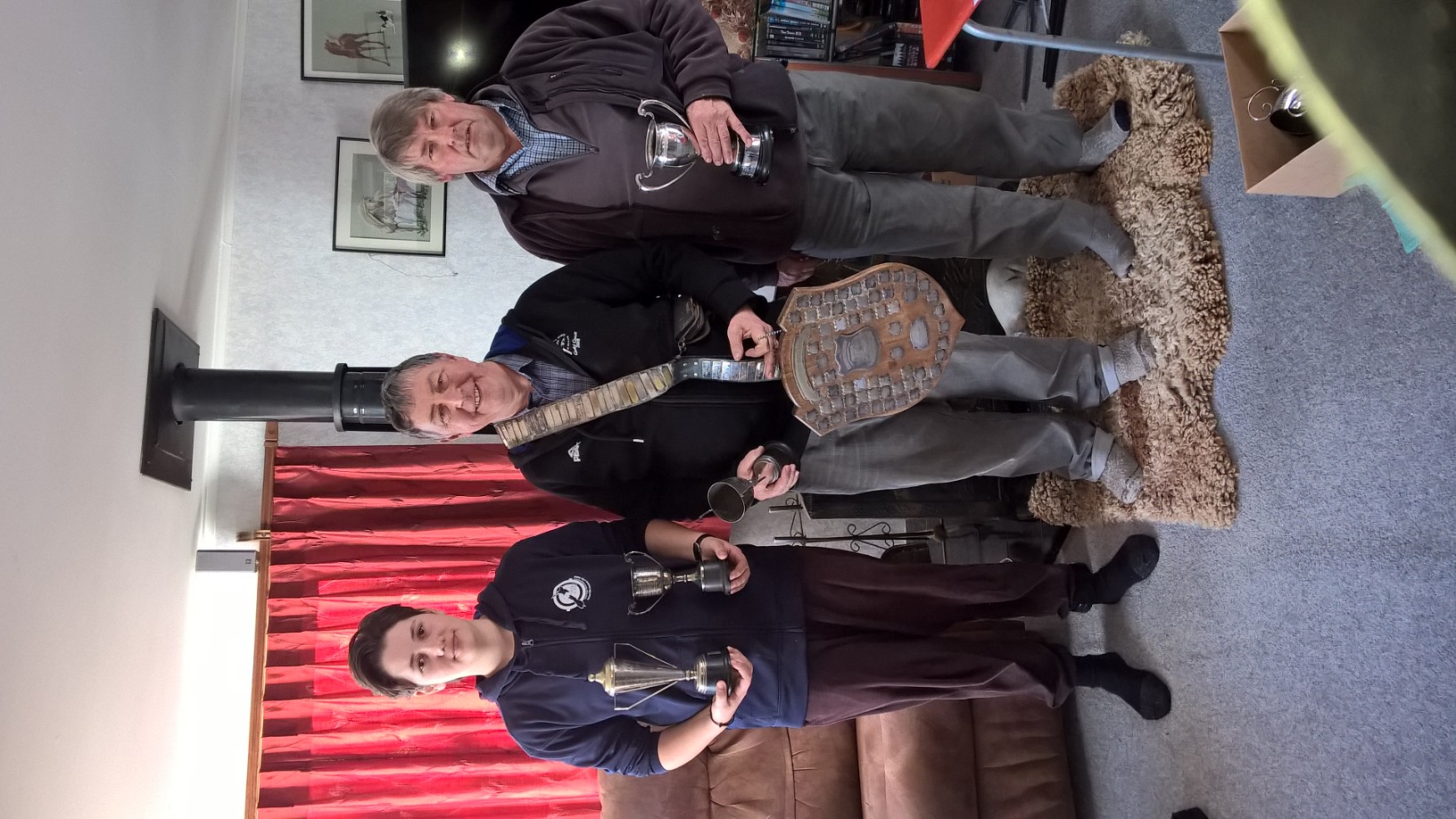
Last edited by JWB; 29-07-2018 at 12:07 AM.
-
30-07-2018, 10:25 PM #53Banned

- Join Date
- Jan 2017
- Location
- erehwon
- Posts
- 196
Club Calendar has been posted on our webpage.
The first Hunter Class Competition is on the 4th November. This prize shoot will follow the format of the last two seasons, and is open to all members of the public who wish to compete.
We are open for normal business from Saturday the 1st September.
http://www.sporty.co.nz/tepukerifleclubLast edited by JWB; 30-07-2018 at 10:55 PM.
-
29-09-2018, 10:08 PM #54Banned

- Join Date
- Jan 2017
- Location
- erehwon
- Posts
- 196
We have been back on the range after our winter break for 5 Saturdays this month. Most of the usual suspects have put in an appearance over that time even though most days the mornings have been designated working bees.
The range is looking a picture as we steadily work our way through the chores necessary for our prize shoot on the 27th/ 28th October. This is a closed shoot only open to Te Puke Rifle Club members and members of other clubs affiliated to the NRANZ. The prize shoot will cater for four rifle classes, F Open, FTR, TR, and Hunter class.
This shoot is not to be confused with our Open shoot for Sporting/Hunter rifles which is an open invitation shoot to all members of the public. This we run as a fundraiser and an introduction to targetshooting in an effort to make ourselves visible to the shooting community. We are fortunate to be sponsored by Whakatane Hunting and Fishing who have provided the bulk of the prize-table for this event with additional aid from Hamertons Lawyers and CollingsGuns, both also from Whakatane.
As requested, we will run two of these public shoots this season, and the date for the first shoot is rapidly approaching. It is the 4th November 2018. To help us in preparing for the event, we would appreciate those intending to attend, to book their spot by contacting our club Secretary. His name is Alan and the contact number is 021 251 2843.
Today was a quiet day, with four of the crew in Trentham for the Palma team training weekend, so most experimented with different setup and sighting options with a bit of coaching practise thrown in. Along with the dedicated target rigs we also had 5 shooting Hunting rifles on the mound at 600 yards, and three of them were first time visitors. Most welcome. With 3 electronic targets operating, and only 11 shooters on hand, there were no queues, no waiting and lots of shooting on a gorgeous Bay of Plenty day.
-
30-10-2018, 08:33 AM #55Member

- Join Date
- Jun 2014
- Location
- CNI
- Posts
- 5,989
HUNTER CLASS SHOOT SUNDAY 4th OF NOVEMBER 2018.
TE PUKE RIFLE CLUB IS HONOURED TO HOST THE BAY OF PLENTY’S THIRD OPEN CHAMPIONSHIP FOR FACTORY STANDARD SPORTING RIFLES.
THIS IS TO INTRODUCE KEEN HUNTERS TO OUR NEW HUNTER CLASS COMPETITION FOR SPORTING RIFLES TO INCREASE THEIR SKILLS AND HAVE SOME FUN AT LONGER RANGES.
THE COMPETITION WILL BE HELD OVER 300, 500 AND 600 YARDS TO BE SHOT ON SILVER MOUNTAIN ELECTRONIC TARGETS, COURSE OF FIRE – 2 CONVERTIBLE SIGHTERS PLUS FIVE ROUNDS FOR SCORE AT 300 YARDS ONCE, 500 YARDS ONCE AND 600 YARDS TWICE, ON NRANZ TARGETS. ROUND COUNT REQUIRED 7 ROUNDS PER RANGE SO 28 ROUNDS FOR THE DAY.
ALL SHOTS WILL BE FIRED PRONE, WITH RIFLES SUPPORTED BY BIPOD/BACKPACK OR SIMILAR.
ENTRY FEE IS $40.00
SCRUTINEERING STARTS AT 8.30AM AND SHOOTING WILL START AT 9.30AM
THERE WILL BE A BBQ AND REFRESHMENTS AFTER THE SHOOT.
http://www.sportsground.co.nz/tepukerifleclub
Range is located on 823 Maniatutu Road, Pongakawa
THIS SHOOT IS LIMITED TO 50 PLACES, ON A FIRST IN, FIRST SERVED BASIS.
TO GIVE ALL SHOOTERS A FAIR CHANCE TO COMPETE WITH EACH OTHER WE WILL SCRUTINEER ALL RIFLES ON ARRIVAL TO SIMILAR RIFLE CATEGORIES (HUNTER/VARMINT ETC).
SPONSORED PRIZES WILL BE AWARDED
-
30-10-2018, 08:34 AM #56Member

- Join Date
- Jun 2014
- Location
- CNI
- Posts
- 5,989
Hunter Class sponsored shoot
HUNTER CLASS SHOOT SUNDAY 4th OF NOVEMBER 2018.
TE PUKE RIFLE CLUB IS HONOURED TO HOST THE BAY OF PLENTY’S THIRD OPEN CHAMPIONSHIP FOR FACTORY STANDARD SPORTING RIFLES.
THIS IS TO INTRODUCE KEEN HUNTERS TO OUR NEW HUNTER CLASS COMPETITION FOR SPORTING RIFLES TO INCREASE THEIR SKILLS AND HAVE SOME FUN AT LONGER RANGES.
THE COMPETITION WILL BE HELD OVER 300, 500 AND 600 YARDS TO BE SHOT ON SILVER MOUNTAIN ELECTRONIC TARGETS, COURSE OF FIRE – 2 CONVERTIBLE SIGHTERS PLUS FIVE ROUNDS FOR SCORE AT 300 YARDS ONCE, 500 YARDS ONCE AND 600 YARDS TWICE, ON NRANZ TARGETS. ROUND COUNT REQUIRED 7 ROUNDS PER RANGE SO 28 ROUNDS FOR THE DAY.
ALL SHOTS WILL BE FIRED PRONE, WITH RIFLES SUPPORTED BY BIPOD/BACKPACK OR SIMILAR.
ENTRY FEE IS $40.00
SCRUTINEERING STARTS AT 8.30AM AND SHOOTING WILL START AT 9.30AM
THERE WILL BE A BBQ AND REFRESHMENTS AFTER THE SHOOT.
http://www.sportsground.co.nz/tepukerifleclub
Range is located on 823 Maniatutu Road, Pongakawa
THIS SHOOT IS LIMITED TO 50 PLACES, ON A FIRST IN, FIRST SERVED BASIS.
TO GIVE ALL SHOOTERS A FAIR CHANCE TO COMPETE WITH EACH OTHER WE WILL SCRUTINEER ALL RIFLES ON ARRIVAL TO SIMILAR RIFLE CATEGORIES (HUNTER/VARMINT ETC).
SPONSORED PRIZES WILL BE AWARDED
-
30-10-2018, 09:52 AM #57Gone but not forgotten

- Join Date
- Apr 2017
- Location
- Hamilton
- Posts
- 4,129
How factory standard do rifles have to be?
My Brno ZKK 601 has a fibreglass stock (at least I think its fibreglass), but would have had a wooden stock when it left the factory in 1990.
-
30-10-2018, 04:35 PM #58Member

- Join Date
- Jul 2012
- Location
- Tauranga
- Posts
- 2,637
That and other things such as a larger power ( than 10 ) could well put you into the next class, last year i think there were 3 classes.
Hunter (standard package type rifle with 3 -9 scope )
Modified Upgraded stock / scope magnification
Open Ugraded stock / scope / supressor
Thats an outline only not sure of the exact rule cutoffs.
Any changes wont put you out of competing it will just mean you are competing with similar rifle styles. Hence the scrutineering where rifles are weighed and checked out.
-
05-11-2018, 08:30 PM #59Member

- Join Date
- May 2012
- Location
- Te Puke
- Posts
- 71
A big thank you to everyone who came out to the Hunter Class shoot on Sunday ,we had about 20 shooters attend who had to deal with some pretty interesting wind on the day . A few brews and a sausage sizzle before the prize giving finished off the day
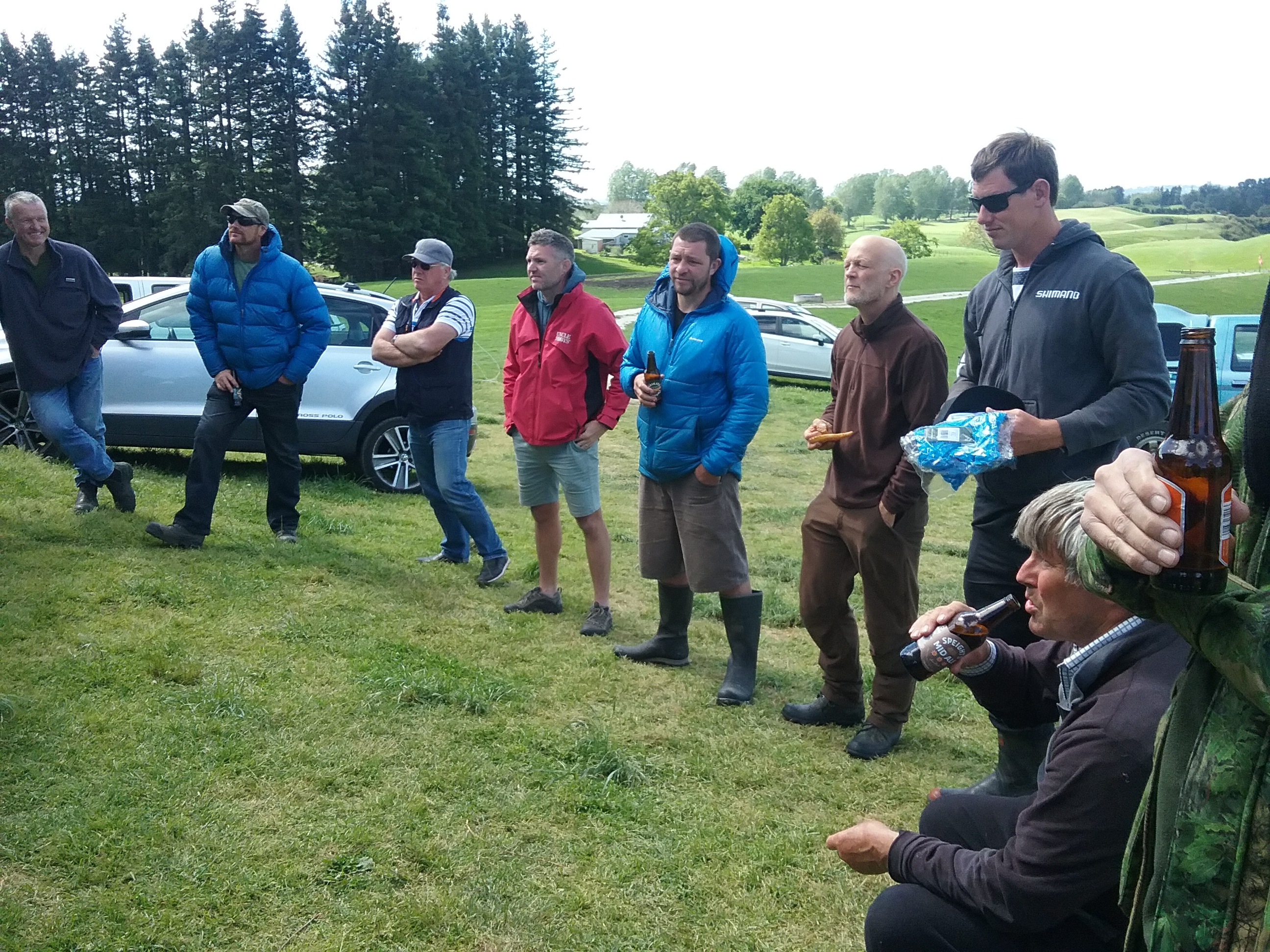
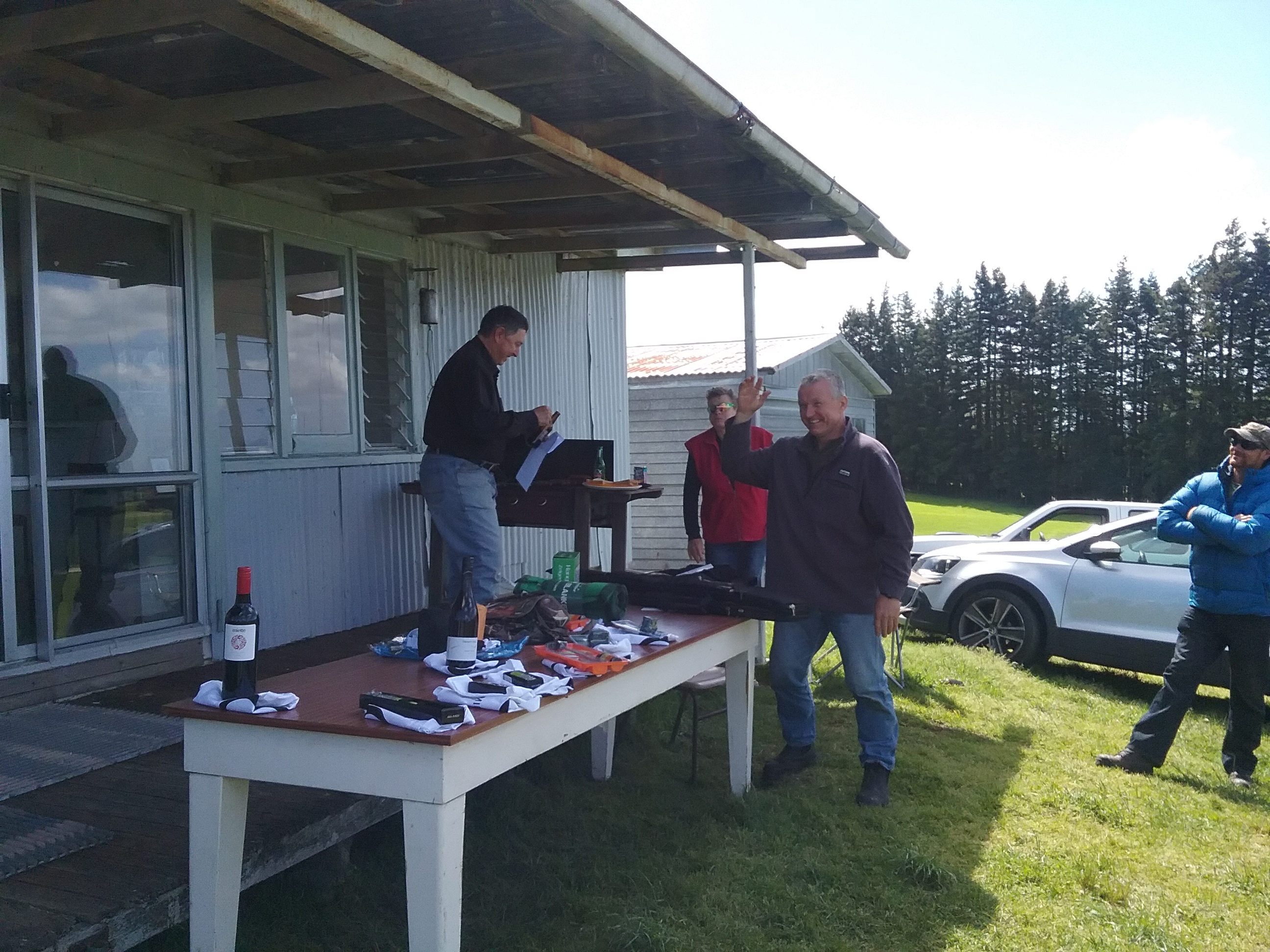
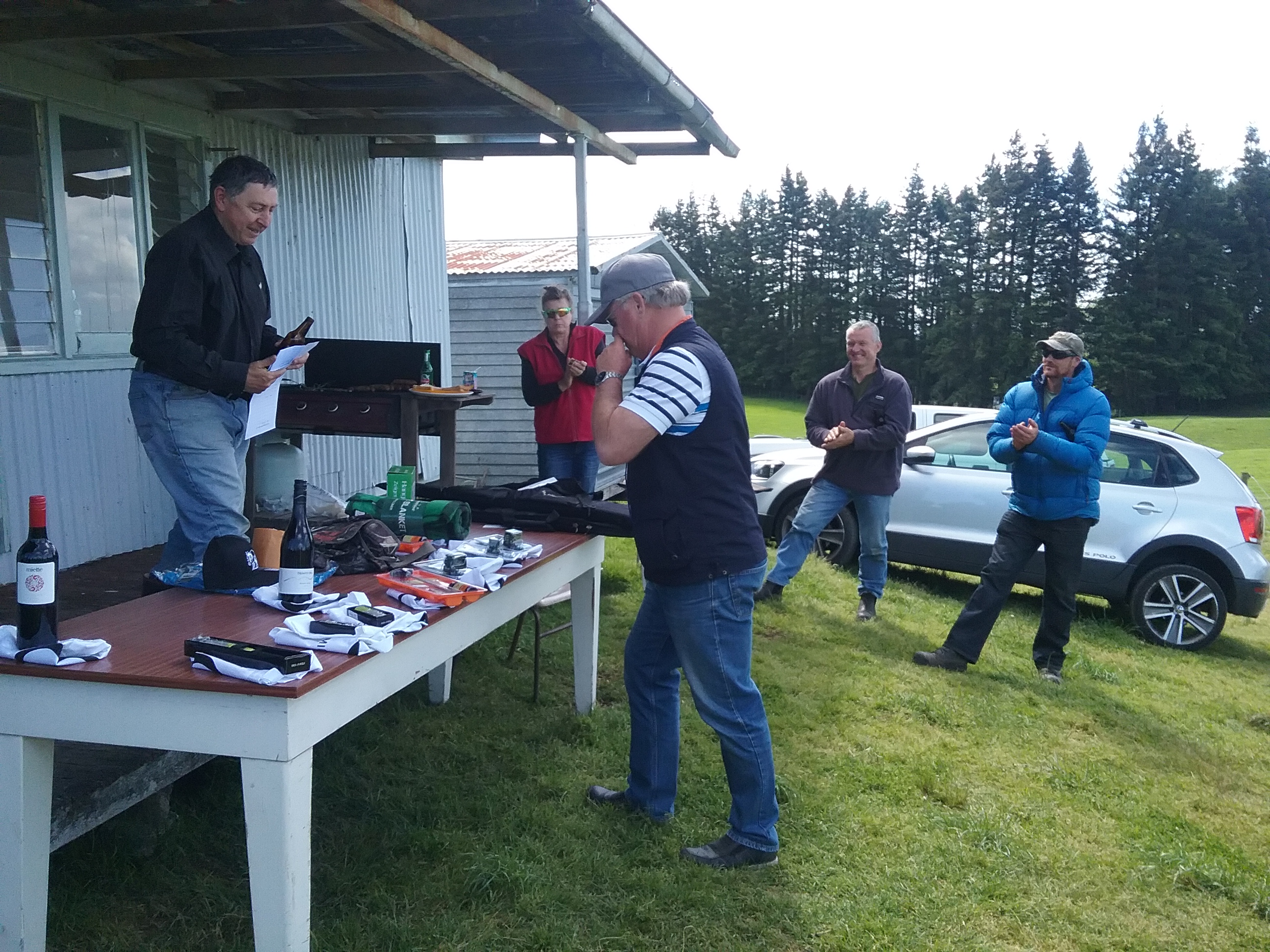
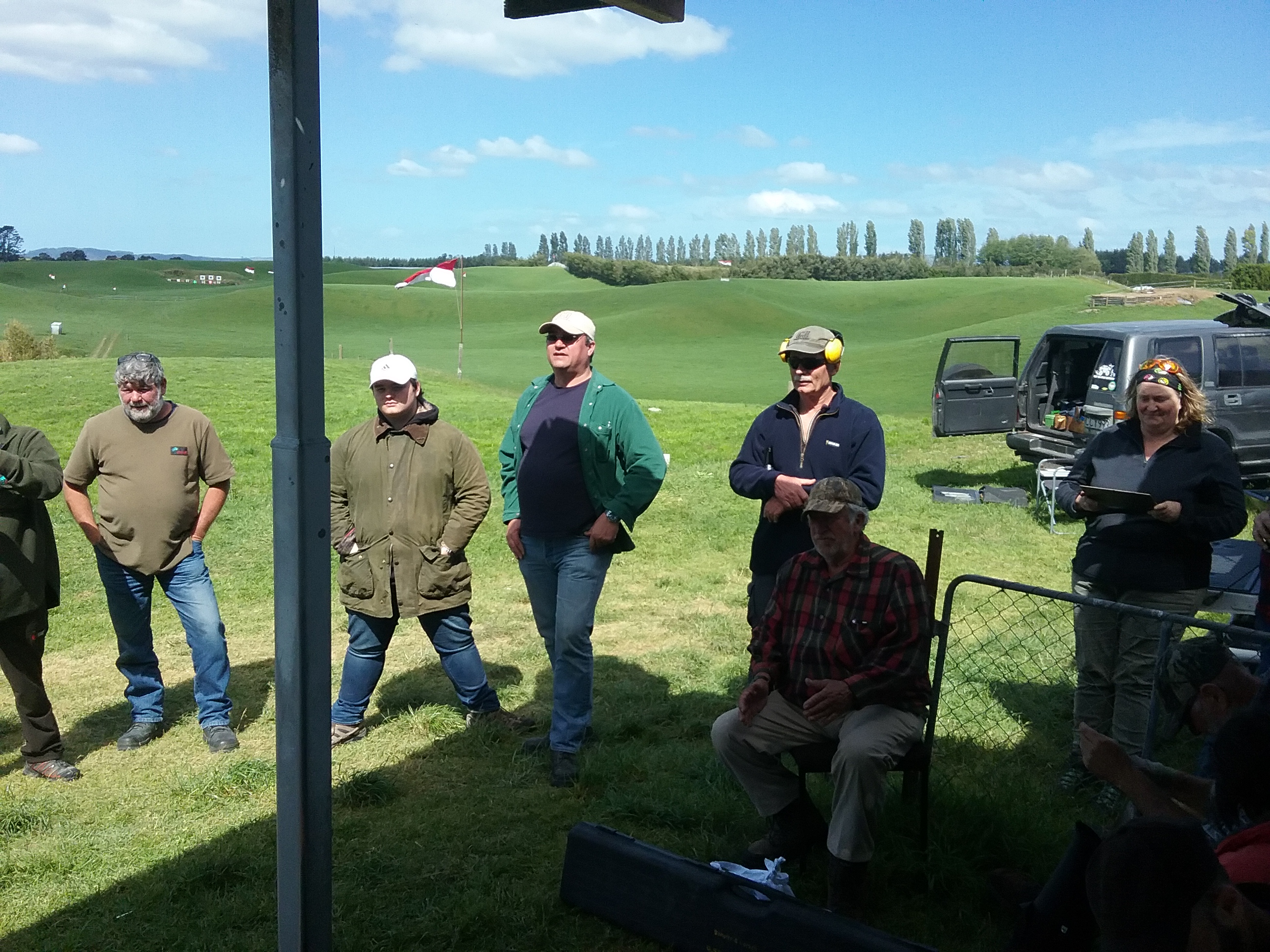
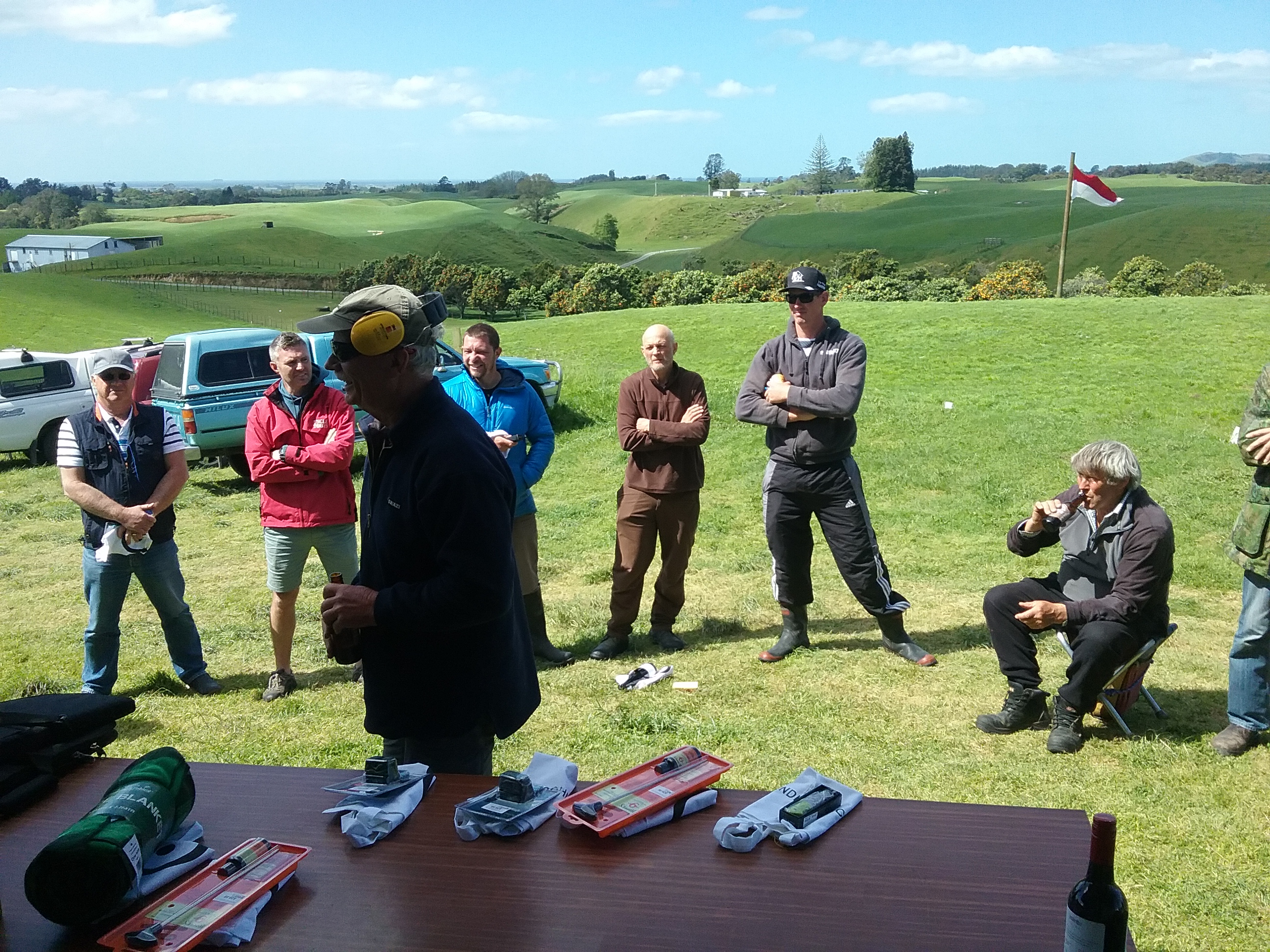
-
05-11-2018, 09:09 PM #60
Similar Threads
-
Bruce Rifle Club - Service Rifle Action Shoot 28DEC14
By fernleaf in forum ShootingReplies: 5Last Post: 30-12-2014, 01:01 PM -
Bruce Rifle Club - Service Rifle Competition 2014
By fernleaf in forum ShootingReplies: 6Last Post: 27-10-2014, 03:40 PM -
Bruce Rifle Club Service Rifle Competition 2013
By fernleaf in forum ShootingReplies: 11Last Post: 28-10-2013, 07:38 PM
Tags for this Thread
Welcome to NZ Hunting and Shooting Forums! We see you're new here, or arn't logged in. Create an account, and Login for full access including our FREE BUY and SELL section Register NOW!!





 63Likes
63Likes LinkBack URL
LinkBack URL About LinkBacks
About LinkBacks



 Reply With Quote
Reply With Quote




Bookmarks